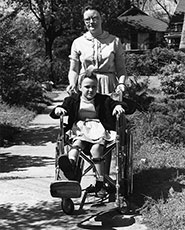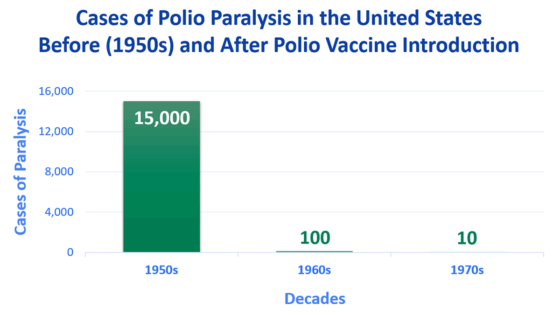What You Need To Know About Polio and the Recent Outbreak in New York
What You Need To Know About Polio and the Recent Outbreak in New York
Stamford Pediatrics administers IPV, the injected form of Polio vaccine to all of our patients starting at 2 months of age. There is no cure for Polio, thus prevention is critical. Please see the attached articles for detailed information.
Polio Elimination in the United States
July 21, 2022: CDC is aware of a case of polio in an unvaccinated individual from Rockland County, New York, and is consulting with the New York State Department of Health on their investigation. Public health experts are working to understand how and where the individual was infected and provide protective measures, such as vaccination services to the community to prevent the spread of polio to under- and unvaccinated individuals. There is no cure for polio, but it is preventable through safe and effective vaccination.
Poliovirus infections still occur in some countries. Get your child vaccinated on schedule to protect them from polio.
Polio Once Caused Widespread Panic
 In the late 1940s, polio outbreaks in the U.S. increased in frequency and size, disabling an average of more than 35,000 people each year. Parents were frightened to let their children go outside, especially in the summer when the virus seemed to peak. Travel and commerce between affected cities were sometimes restricted. Public health officials imposed quarantines (used to separate and restrict the movement of well people who may have been exposed to a contagious disease to see if they become ill) on homes and towns where polio cases were diagnosed.
In the late 1940s, polio outbreaks in the U.S. increased in frequency and size, disabling an average of more than 35,000 people each year. Parents were frightened to let their children go outside, especially in the summer when the virus seemed to peak. Travel and commerce between affected cities were sometimes restricted. Public health officials imposed quarantines (used to separate and restrict the movement of well people who may have been exposed to a contagious disease to see if they become ill) on homes and towns where polio cases were diagnosed.

Polio was once one of the most feared diseases in the U.S. In the early 1950s, before polio vaccines were available, polio outbreaks caused more than 15,000 cases of paralysis each year. Following introduction of vaccines —specifically, trivalent inactivated poliovirus vaccine (IPV) in 1955 and trivalent oral poliovirus vaccine (OPV) in 1963—the number of polio cases fell rapidly to less than 100 in the 1960s and fewer than 10 in the 1970s.
